Should People Protect Animal Habitats: Why Or Why Not?
Plants and animals maintain the health of an ecosystem. When a species becomes endangered, it'southward a sign that an ecosystem is out of balance. And the consequences tin be critical.
Ecosystems are groups of plants and animals that are institute in the same area and collaborate with each other. These interactions brand up and maintain the environments we know today – similar rainforests, mountains and savannahs.
But the balance within an ecosystem isn't always piece of cake to maintain; the loss of one species oft triggers the loss of others. For example, when grey wolves were hunted to near-extinction in the United States' Yellowstone National Park, the beaver population as well decreased significantly.
This happened because the elk population, which are unremarkably hunted past wolves, were able to graze freely and more heavily on the plants that were also needed by beavers to survive during winter.
The conservation of endangered species, and restoring balance to the world's ecosystems, is vital for humans, as well. Here'due south how.
The benefits of conserving endangered species
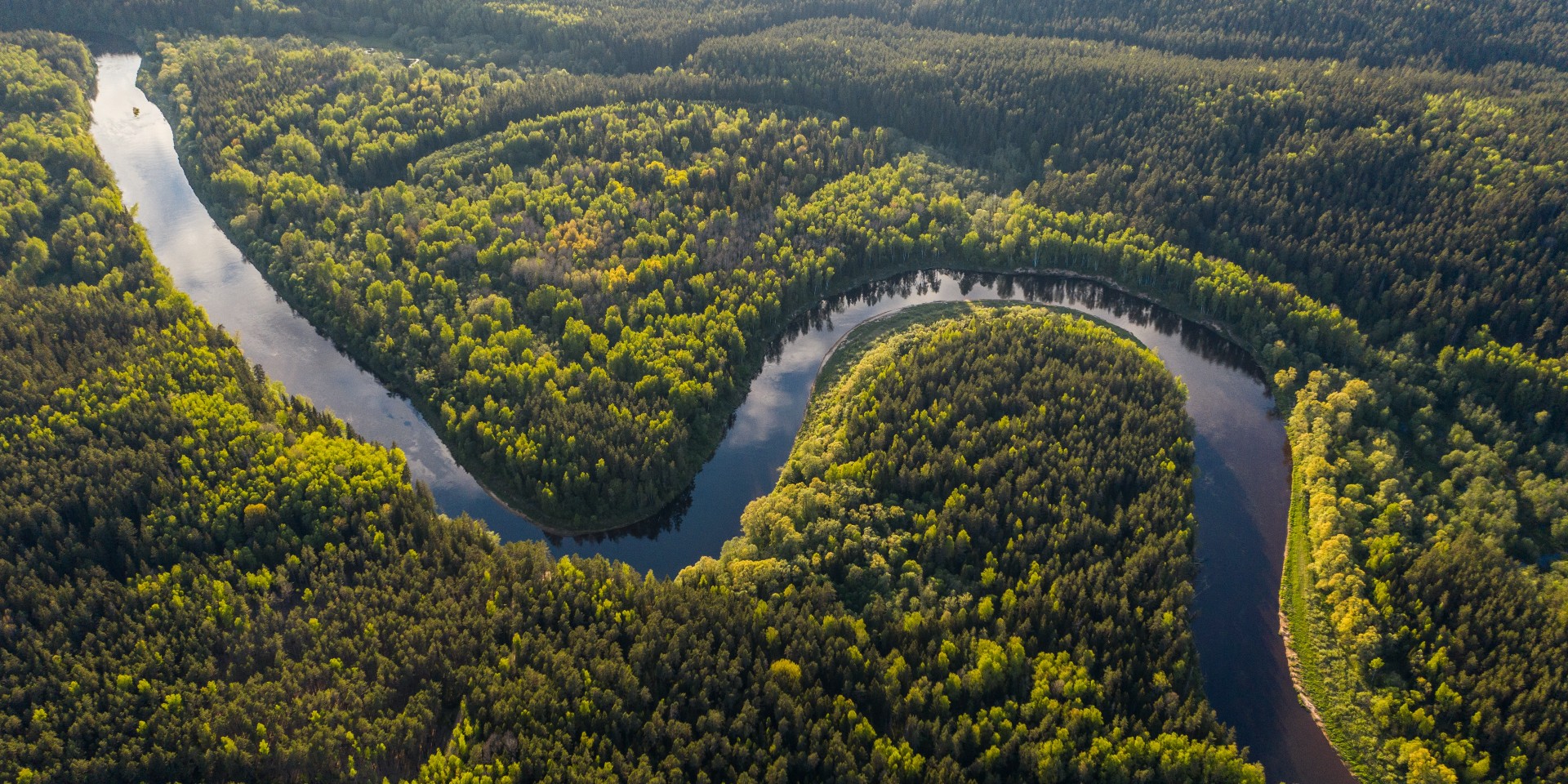
Original photo: Ivars Utināns is under the Unsplash License
A well-balanced ecosystem maintains the health of the environment. This ensures that humans accept access to clean air and h2o, and fertile land for agriculture.
It goes without saying that make clean air and water improves our quality of life, and fertile country for agriculture ensures that nosotros tin can produce enough food for consumption. A balanced ecosystem also provides u.s.a. with plants that have medicinal properties .
So, when ecosystems aren't maintained, our health tin be affected too. That's why, when you contribute to the conservation efforts of endangered species, y'all're likewise contributing towards humans' well-being.
How to contribute towards the conservation of endangered species
Governments, non-turn a profit organisations, international organisations, local communities and individuals are working together to contribute towards growing the populations of endangered species.
They're as well edifice on awareness campaigns that are aimed at getting more people involved in vital conservation work.
You tin can brand an impact by learning and raising sensation nigh endangered species in your area and across the world. A sustainable way to exercise this is to get involved as a volunteer and partner with governments and organisations – like GVI – on existing marine or wild fauna conservation projects.
This is a groovy style to larn about wild fauna conservation, and gain hands-on, professional field experience. These applied skills will boost your resume for a career in sustainable development. And if you have a unlike career in mind, you lot'll still pick upward other valuable skills like teamwork and leadership.
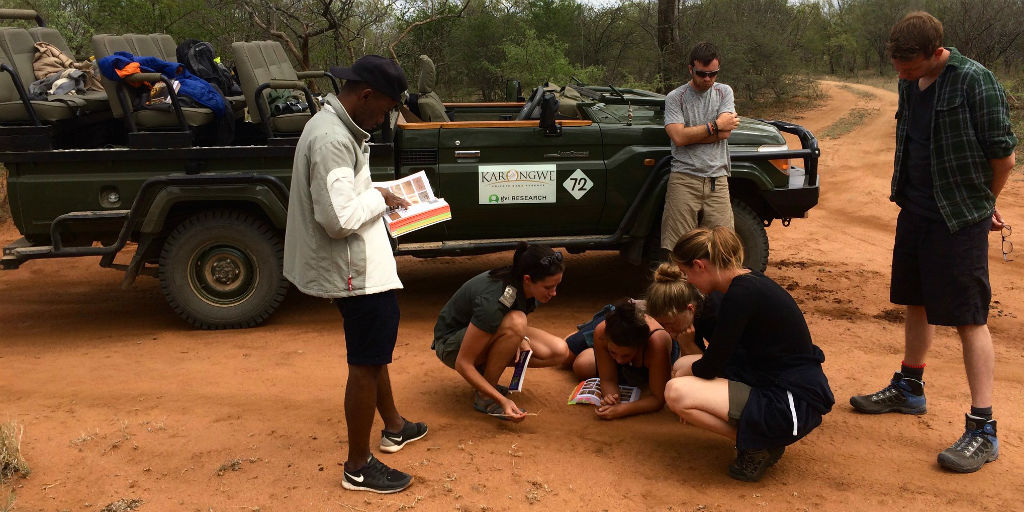

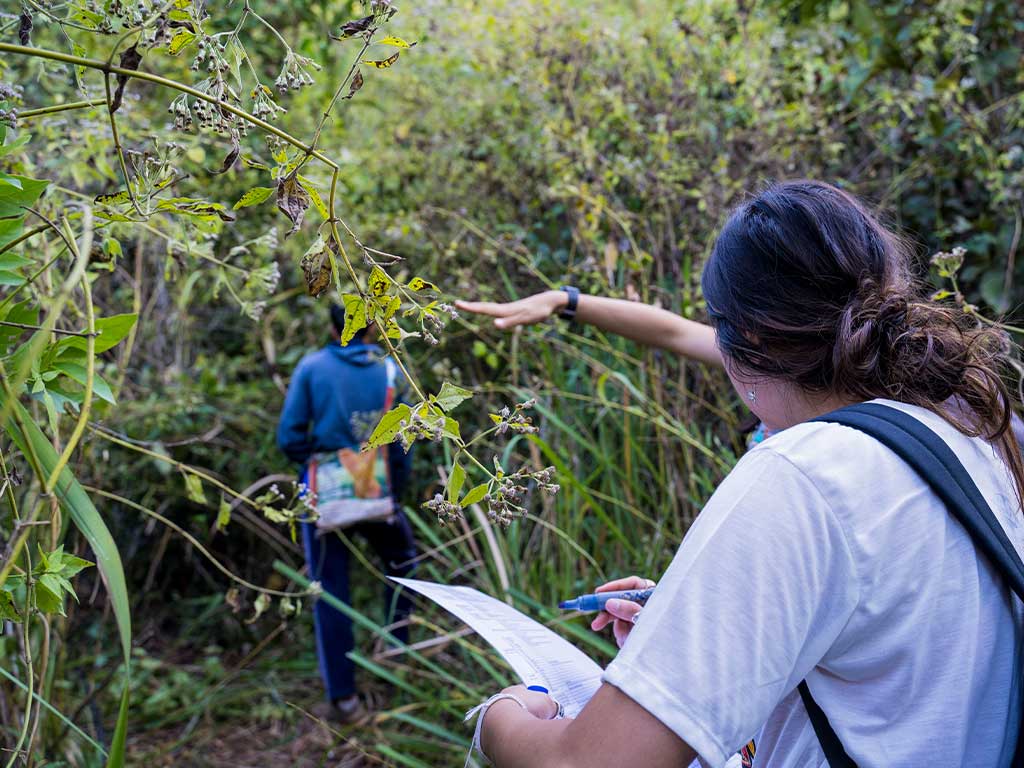

Volunteering is too a valuable opportunity to go involved in scientific enquiry aimed at wild animals conservation. Part of your duties on a wildlife conservation program might include data collection, which provides valuable information that tin exist used by scientists.
GVI works on protecting endangered species past partnering with local governments, communities and non-profit organisations.
So, joining one of our projects as a volunteer or intern will give you the take a chance to help maintain well-counterbalanced ecosystems and conserve the animals that depend on them. You lot'll learn more nearly conservation in a real-life context, and feel the challenges involved in conservation up shut.
Here are some of the projects that you lot could become involved in to add to the conservation of endangered species with GVI.
Go involved in body of water turtle conservation in Hellenic republic
A GVI volunteer measures the turtle in Giannitsochori, Greece. Data nerveless from GVI conservation projects contributes to littoral management plans in Hellenic republic.
Discover out more

Six of the 7 species of body of water turtles are listed as vulnerable, endangered, or critically endangered on the International Union for Conservation of Nature'southward (IUCN's) Red Listing .
There are several reasons for this including:
- Climate change, which can bear upon the nesting sites and the temperature of the sand (warmer sand temperatures hateful more female turtles).
- Poaching activities that target turtle eggs, skins, shells and meat.
- Uncontrolled coastal evolution which limits their nesting grounds.
- Waste material polluting the ocean (turtles are at risk of eating or condign tangled in litter similar plastic bags, COVID-19 masks or plastic beer rings).


We have to safeguard these animals because sea turtles play a fundamental role in marine ecosystems .
For example, by grazing on seagrass, turtles help continue information technology short, encouraging information technology to abound horizontally across the sea floor. In this way, the seagrass can continue to provide back up and protection for other marine life. It can also remove carbon dioxide from the temper more than efficiently, which is vital for regulating the earth'southward temper.
The Mediterranean Sea hosts thousands of loggerhead turtles during their nesting season. And the Greek shoreline serves as one of the largest loggerhead breeding grounds in the world.
In the 1980s, a guild named ARCHELON was established past a grouping of concerned citizens and scientists. They were determined to safeguard the loggerhead turtle, and focused on the evolution of the shoreline, which had a negative touch on on ocean turtle habitats.
This organisation worked alongside the government to establish protective regulations that are still in place today.
GVI partners with ARCHELON in Greece to patrol the beach, locate new tracks and nests, measure the size of sea turtles, record data, install protective nighttime grids, and conduct public sensation activities in Greek communities.
The data nerveless is used to develop local coastal-management plans and international conservation strategies.
And, by assisting in protecting nests confronting predation and flooding, GVI volunteers can contribute towards the survival of as many hatchlings as possible.
Looking to help body of water turtles elsewhere? Check out GVI's other sea turtle conservation projects in Thailand , Republic of seychelles and Costa rica .
Add to anti-rhino poaching awareness in Southward Africa
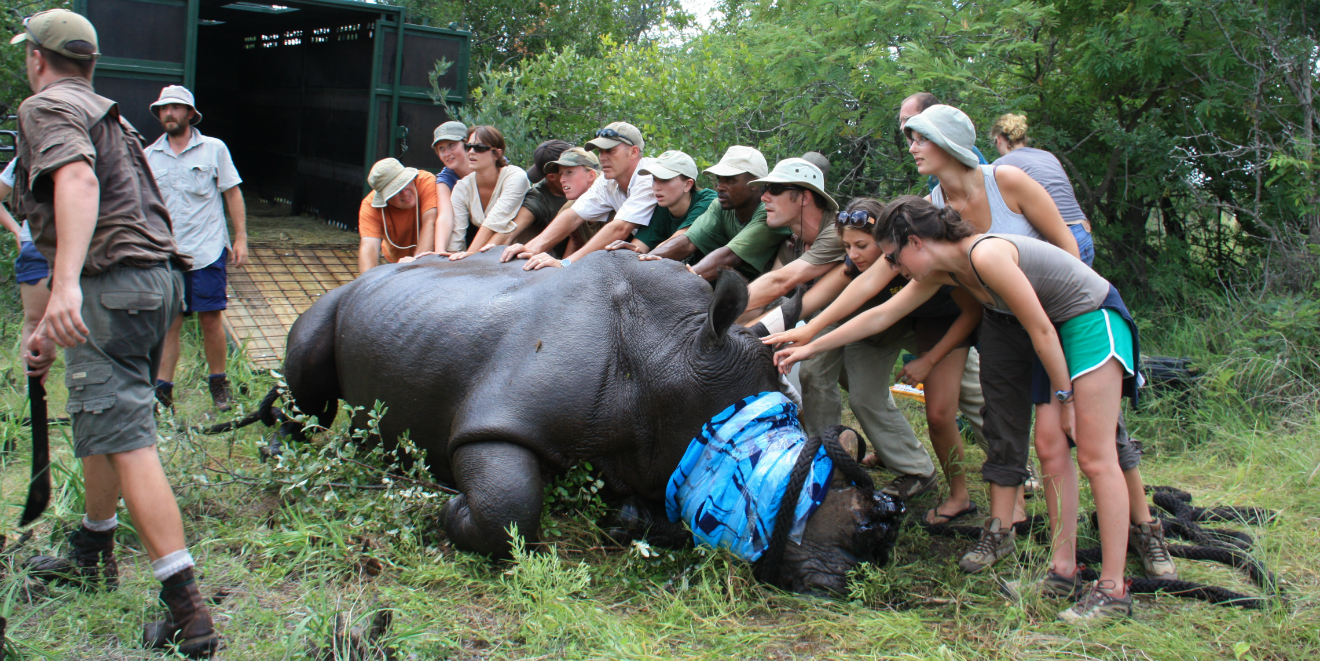
GVI volunteers assist in dehorning a blackness rhinoceros in Karongwe Individual Game Reserve in Limpopo, South Africa. Dehorning takes place every two years and is essential in ensuring the protection of the critically endangered black rhino, which is poached for its horn.
Rhinos are known as megaherbivores – very big animals that only eat plants. And, rhinos are considered a keystone species. This ways that they are a species that is important in maintaining the habitat they alive in.
Grazers, like rhinos, play a critical role in keeping the ecosystem counterbalanced. Their grazing keeps grass short, and because they prefer to eat sure plants over others, they influence the types of plants that grow in an area, and how fast they abound.
Despite their importance to the ecosystem, black rhinos in South Africa are listed as critically endangered co-ordinate to the IUCN. The blackness rhino population has experienced a more than ninety% refuse in their numbers since 1970.
Today, few rhinos survive outside of national parks due to poaching and the destruction of their natural habitat. In 2021, 451 rhinos were poached in South Africa.
Rhinos are poached primarily for their horns. These horns are used in some traditional medicines or sold in illegal trade.
As a volunteer on GVI's anti-poaching project, y'all'll learn nearly the conservation concerns in South Africa.
You'll also get involved in activities that build on public sensation of these bug, and piece of work aslope local partners to collect data on rhinos and other wildlife species.
Your work will include tracking wildlife, setting upwards camera traps and using radio telemetry equipment on inquiry game drives.
Volunteer with Asian elephants in Thailand
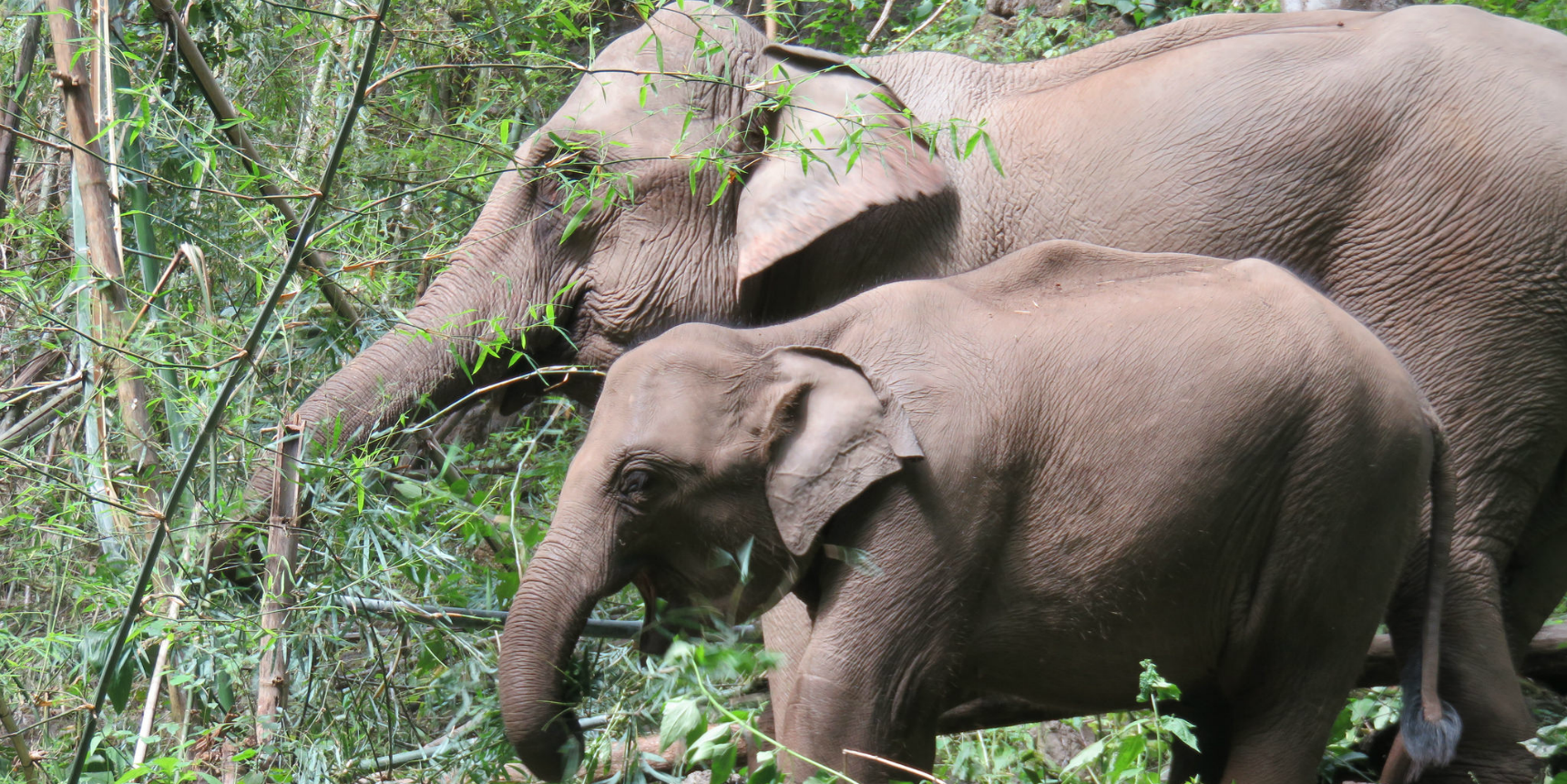
Volunteer with Asian elephants in Chiang Mai, Thailand, and contribute toward their reintroduction into the wild. Volunteers work in partnership with local elephant carers (mahouts) who draw on generations of local knowledge about elephants.
Similar rhinos, elephants are also a keystone species. When they graze in the forest, they cover dandy stretches of ground and control the growth of vegetation. Elephants also spread the seeds of the plants they eat, which promotes plant growth and biodiversity.
Asian elephants are listed every bit endangered by the IUCN. The subtract in their population size is largely due to elephant labour in the tourism industry, too every bit deforestation of their habitats.
There are only xl,000–50,000 Asian elephants left in the wild . And, of the 3,000 Asian elephants found in Thailand, about half of them are kept in captivity.
This is because in Thailand, Asian elephants were historically used as part of the workforce, in the logging manufacture and the armed forces, as well every bit for cultural celebrations.
Even though they are no longer used in the workforce, Asian elephants are seen as tourist attractions. This ways that the elephants take part in activities similar providing rides for tourists, or performing in circuses, which has a negative impact on their well-being.
As a volunteer on GVI'southward Thailand elephant reintegration project in Chiang Mai, you'll collect data on the behaviour and feeding patterns of elephants.
Y'all'll piece of work alongside traditional elephant carers who take generations of knowledge on elephant behaviour and well-existence.
During your fourth dimension in Thailand, you lot'll live with a local family, which will help you to better understand how this community relies on these endangered animals.
CONSERVATION REVIEWS
If y'all'd similar to find out what the experience of joining a GVI project is really like, simply contact us and we'll put you in touch with i of our many Alumni.
Encounter us
Brand a positive impact in wildlife conservation
GVI's conservation work also extends to animals that are non yet endangered, such as the cheetah and jaguar . The cheetah is not yet endangered.
Join one of GVI'southward Southward African conservation programs & assistance to protect this big cat.
This is considering all animals are affected by global warming and ecology challenges. So we're keeping an eye on every bit many animal species equally possible, and getting involved in their conservation as before long as we can.
Want to be at the forefront of conservation work across the world?
Check out GVI'southward wildlife and marine conservation programs in Asia, Africa, Europe, Australasia, and Central and Latin America, and start adding to the conservation of endangered species today.
We empathise that you may have questions most how COVID-19 will bear upon your travel plans. Visit our FAQs page which explains our latest safe protocols in response to COVID-19.
Disclaimer: The images in this commodity were taken pre-COVID-19.
Source: https://www.gvi.co.uk/blog/why-should-we-save-endangered-species/
Posted by: gaultgrabusereave1955.blogspot.com

0 Response to "Should People Protect Animal Habitats: Why Or Why Not?"
Post a Comment